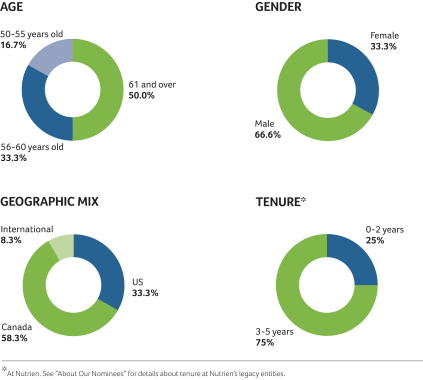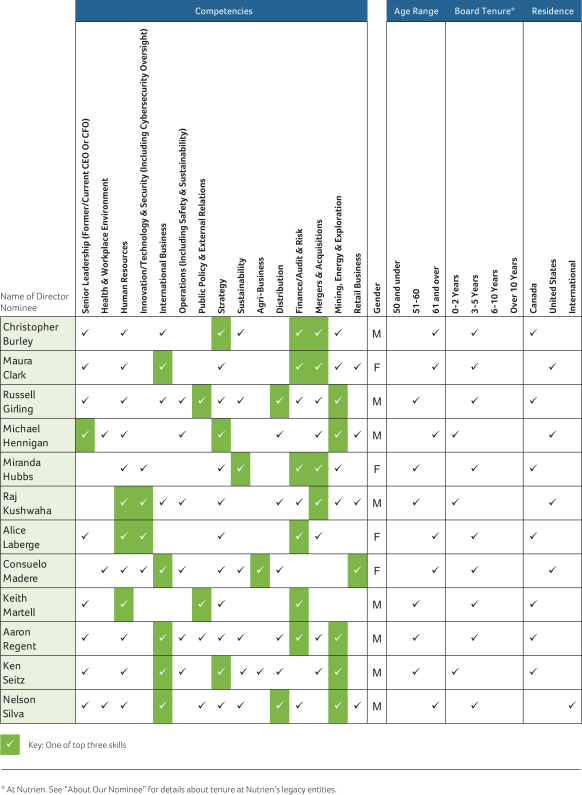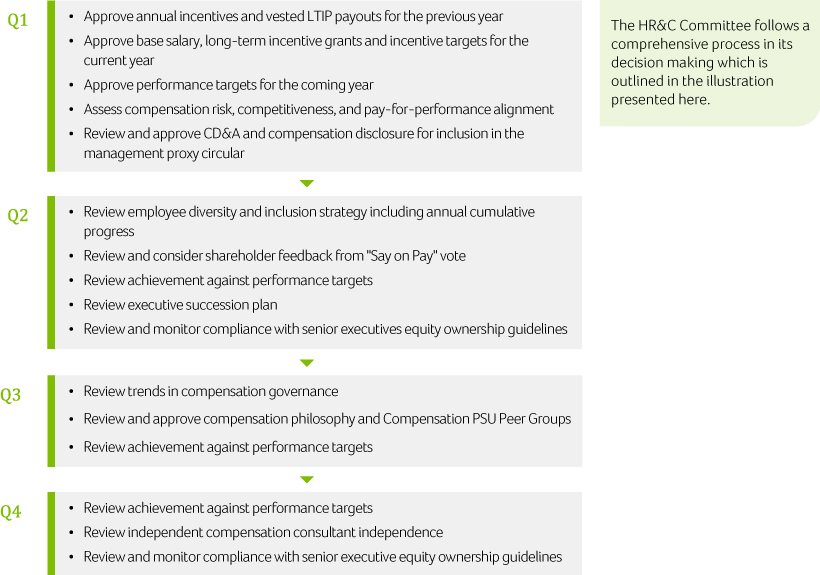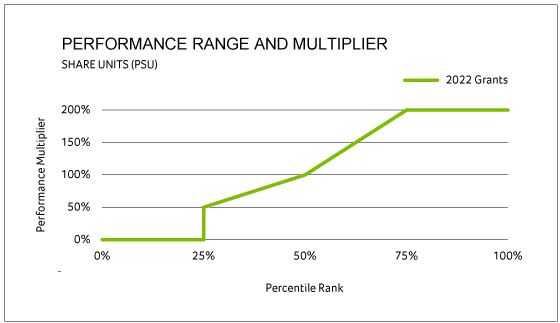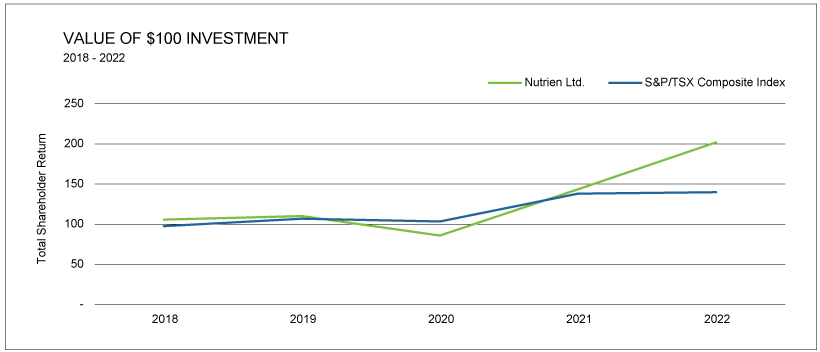| | | | |
| Nutrien AGM Circular 2023 | | | 37 | |
The board has determined that all of the proposed nominees, with the exception of Ken Seitz and Keith Martell, are “independent” for purposes of the board independence standards described above. Mr. Seitz is not independent because he is our President and Chief Executive Officer. Mr. Martell is deemed non-independent, effective January 1, 2023, solely as a result of his adult daughter, with whom he shares a residence, being employed by the Company’s external auditor and participating in the external auditor’s audit, assurance or tax compliance practice. Mr. Martell’s adult daughter does not participate in any matters related to Nutrien. Absent this deeming rule, the board has determined that Mr. Martell does not have any direct or indirect relationship with the Company which could, in the view of the board, be reasonably expected to interfere with his independent judgement.
Board Tenure
Under the board’s Corporate Governance Framework, a director’s retirement age is generally 72 years, however, the board may request a director extend his or her term of service beyond such retirement age.
We do not limit the time that a director can serve on the board. While director term limits can assist with board refreshment, there may be circumstances where the board does not want to lose the deeper knowledge of the business and the experience of a longer-serving director.
Board performance evaluations, the board’s retirement policy and our director succession planning program, which includes updated assessments of our board competencies and skills matrix are all mechanisms used by the board to achieve board refreshment.
Board Interlocks and Overboarding
Under the terms of the Corporate Governance Framework, a board interlock arises when two of the Corporation’s directors also serve together on the board of another public company and there shall be no more than two board interlocks at any given time. As of the date of this circular, there are no board interlocks among board members.
The Corporate Governance Framework also describes Nutrien’s overboarding policy. The Chief Executive Officer (CEO) should not serve on the board of more than one other public company. The CEO should not serve on the board of any other company where the chief executive officer of that other company serves on Nutrien’s board. Directors (other than the CEO) who are employed as chief executive officers, or in other senior executive positions of another public company on a full-time basis, should not serve on any public company board other than the board of their employer and Nutrien’s board. Other directors should not serve on more than three boards of public companies, in addition to Nutrien’s board. Directors are expected to notify the board and CG&N committee chairs before accepting an invitation to serve on another public company board, to allow the chairs to reasonably assess whether the additional responsibilities will compromise the director’s availability and capacity to fulfill his or her commitment to the board, and whether any real or apparent conflict of interest will result. Executive officers must obtain the approval of Nutrien’s CEO before accepting an invitation to serve on a public company board. The Corporate Governance Framework limits the number of public company boards on which our directors and executive officers should serve.
Board Succession Planning and Refreshment
The CG&N Committee has primary responsibility for board succession planning and for developing a list of nominees for election as directors at each annual meeting. The CG&N Committee chair regularly reports to the board on the board succession planning process. In 2021, the CG&N Committee undertook an evaluation of Nutrien’s existing policies and practices regarding board chair, committee chair and committee member refreshment. This evaluation resulted in the adoption of Chair and Committee Rotation Guidelines, which acknowledge that regular rotation of the board chair, committee chairs’ and committee members’ responsibilities among directors is part of an effective board renewal policy, and which guidelines provide for the board to pay particular consideration to rotating the board chair following a five to seven-year term, committee chairs following a three to five-year term, and committee members following a three to five-year term.
In addition, the CG&N Committee reviews and updates, as appropriate, the board competencies and skills matrix annually, with a view in particular to take into account the Corporation’s strategic plan and the needs of the board. The committee then reviews overall board composition to assess whether the board has the right mix of skills, perspectives, experience and expertise necessary for proper oversight and effective decision making, benchmarked against the skills matrix and the board’s diversity objectives.
The CG&N Committee also considers expected turnover and board refreshment. Working with the board chair, the committee considers the expected term of office of each director and how close they are to retirement age in order to plan for potential departures.
The CG&N Committee also reviews the annual board assessment results to determine whether changes are needed and reviews each candidates’ independence in light of legal and regulatory requirements.
The board chair, CEO, certain committee chairs and other directors interview any suitable candidates, and the Corporation conducts background and conflict checks. Search firms engaged by the Corporation are instructed to ensure that diverse candidates are included in the search process.
 Notice of Annual Meeting of Shareholders and Management Proxy Circular Annual Meeting of Shareholders Wednesday, May 10, 2023
Notice of Annual Meeting of Shareholders and Management Proxy Circular Annual Meeting of Shareholders Wednesday, May 10, 2023





